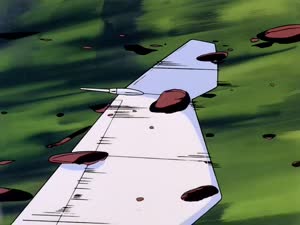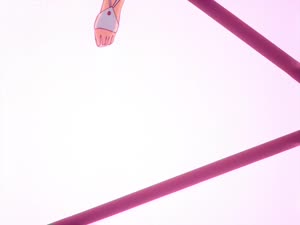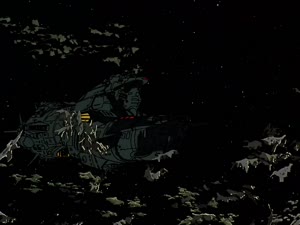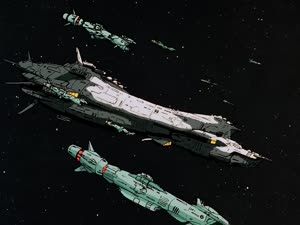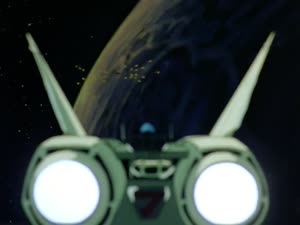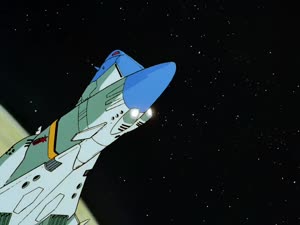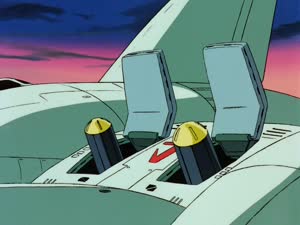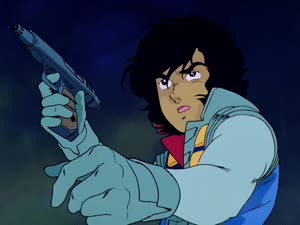Copyright: crusher joe
http://amzn.asia/32b4Evr
The interviewer is Makoto Ishii and the interviewees are Yoshikazu Yasuhiko and Gen Satou.
YAS: Gen-chan and Takahashi Kumiko-chan are among the very few pupils I've adopted. Thinking I should take on newbies every once in a while, I took applications for animators at Sunrise when I was making Mobile Suit Gundam movies (henceforth referred to as Gundam.) and hired them.
GEN: I joined the studio during Kidou Senshi Gundam II: Ai Senshi Hen
YAS: A lot of people applied after I advertised. It might have been more than 50 people. That's why I set such a high bar. So if you look at it that way, Gen-chan's pretty good. But out of the four people I took on, he was the worst (laughs). The best one seemed to be already at professional skill level, but Sunrise must not have suited him because he quit soon after. The second best one was Takahashi Kumiko, and the fourth as you know was Gen-chan, but he was an odd guy. He'd say things that made you wonder if he had experience or not, and he was the slightly impertinent type. So I took the 2nd and the 4th. That hiring was at Sunrise, so, gracefully (laughs). But the third best person also quit relatively quickly.
GEN: Yeah, it was pretty fast.
YAS: Takahashi Kumiko and Gen-chan have been properly working ever since, and that's why we're here today. After that I took on newbies at Kugatsusha, the small studio I formed, and they were useful too. I thought I had a good eye for talent. Gen-chan's doing great work. He also drew manga.
GEN: Many of the people brought up under Yasuhiko-san are still in the industry. They might be mangaka or in different fields, but they all continued drawing for a living without giving up.
-- When was Kugatsusha set up?
YAS: The Gundam movies came first, so I suppose it was just as Gen-chan and the others were starting on Ai Senshi. In the middle of the Gundam TV series, I withdrew due to illness. I was discharged from the hospital, but I was so sick I didn't want to move around much. Plus my place in Tokorozawa was an hour both ways from Sunrise in Kamiigusa, and it seemed like a waste of time. So I brought up the idea of bringing some animators to a place near my house, and made a studio called Kugatsusha.
GEN: That apartment wasn't very big,so seven people was about all it could hold.
YAS: It was a small apartment. There were other apartments on either side and it was a middle-hallway type, so we didn't get much sunlight, but unlike outer-stairway type apartment buildings, I thought it had a nice atmosphere. That building is about 50 years old, and is still standing to this day. That apartment building had a lot of ghost stories, and back then I even had staff tell me they'd seen ghosts. "Even though this is the fifth floor, I see people walking past the window every night," they'd say.
GEN: Takahashi-san saw them too. But if you think about it, there was a railroad track right in front, so maybe the light from the train and people's shadows just made it look that way.
YAS: We relaxed and had fun and did things like celebrate members' birthdays. We'd put up decorations in the studio. And that's when, of all times, the Sunrise seisaku shinkou person would come to the studio, to our bad luck.
Gen: We did have parties (laugh).
Yas: He was mad, like "What the hell are you doing!" The people at the Kamiigusa studio were probably all saying that those Crusher Joe guys always start goofing off in broad daylight.
-- Do you have any specific memories from back then?
GEN: There's the story about the food delivery. Yasuhiko-san ordered the katsudon. When he brought in the menu he only said, "I get the katsudon. Something less than that, understand?" I meekly answered "Yes sir."
YAS: Well, I was paying for it, wasn't I? And there were plenty of other dishes for less than the Katsudon.
GEN: I was still young too, so it was surprising. "I have to choose something less than Katsudon, or else," you know. And besides that, there was this one morning, when Yasuhiko-san went out, and he walks in carrying two bags full of the "Arion" illustration books, saying, "They were left laying flat on the display tables at the bookstore, so I bought them." I remember saying, "They're on the flat display because they were selling. If they sell out people who want them won't be able to get them" (laughs).
YAS: I don't remember that, but I understand the feeling. That was my first illustration book, you see. "What am I going to do if there's still this many left unsold?" is probably what I thought. (laughs).
GEN: That kind of episode happened all the time. It was a really comfy studio.
-- It sounds like fun. The staff's amusing antics were published in a mook at the time, which also served to communicate the studio's fun-seeming atmosphere.
GEN: And we had a break time. Everyone would be working hard on their various tasks, but when 3:00 rolled around, everyone would gather at a table in the middle of the room, and we'd take a breather for about 1 hour, bring out snacks, and we'd all talk. That would be unthinkable nowadays. We were spoiled by the salary system. If it had been piecework, we'd have been somewhat more urgent.
YAS: Rather than correcting the genga afterwords, I wanted to do the daiichigenga (ichigen) and dainigenga (nigen) system. We didn't have many experienced gengaman, so I made it so that all the staff had to do was draw dainigenga based on the daiichigenga that I drew. That's a method we brought over from the Gundam movies. Assuming that kind of production, it doesn't matter if the people drawing genga are inexperienced, so I thought I could go with mostly younger people. Veterans would say, "I dont want to do it that way," so my staff necessarily became youthful.
-- Was that not a common way of doing things in anime production?
YAS: It was not common at the time. I don't think the terms ichigen and nigen even existed yet. I guess we called it rough-gen.
GEN: The terms ichigen and nigen were probably coined for Crusher Joe. I think the terms were used in a special article in an anime magazine.
YAS: This method was new back then. First we draw the layout, an image of the completed cut. When a normal person looks at it they might think, "This is so rough it shouldn't make a difference if you have it or not." But it completely changes how the final product turns out. In the era before layouts, it was common to have to completely redraw everything. You'd get cuts so off they'd make you wonder if they were really based on the same storyboard. The schedule and budget don't allow you to send them back [i.e. for retakes], and you end up redrawing everything rather than merely correcting. Having learned that the hard way many times during series work, I decided to draw the reference pictures myself. So I went with the ichigen, nigen method. That way, to make a long story short, there are less mistakes and wheel-spinning. In Kidou Senshi Gundam THE ORIGIN (henceforth referred to as THE ORIGIN), which I'm working on now, I'm drawing very detailed storyboards and having them use the copies as layouts. Thanks to that, I can stop at correction and don't have to do any re-drawing.
-- Satou-san, was that your first time using that method?
GEN: We were doing it that way since Gundam. I'd get the layout from Yasuhiko-san and draw the genga based on that. Crusher Joe was the same, so I wasn't too uncomfortable with it.
YAS: The name didn't really catch on, and I'm still getting it mixed up to this day. Even in The Origin, I say "Layout is finished" and the animation runner comes to get the genga and says, "no, this is ichigen."
-- What kind of impression did having Yasuhiko Yoshikazu as a mentor leave on you?
GEN: About once a month, Yasuhiko-san would give me a theme to practice. I did that with Takahashi-san. Water pouring from a cup, water droplets falling, a person answering the phone, motions like that. Yasuhiko san would draw them himself, and use that to check what we drew. Remember that?
YAS: Well, you were newbies, and that was how I taught. The theory is there, so I had to teach it. Plus it was my own selfish decision to surround myself with new people.
GEN: On the topic of drawing, I talked to Yasuhiko-san about how to draw the residue at the bottom of a glass. How would it refract light, etc. The disco lights, too, there was a spinning mirror ball, and besides the ball itself, we talked about how to make the human beings blink on and off in the light. He was particular about that kind of portrayal of light.
-- I feel like the characters are always moving. Were you told to focus on making them move?
YAS: For a film to be "fun," I believe it must "move a lot." Since there was nothing to ty to look cool and show off with stills, I'd give a lot of instructions on the movement, drawing a rougher-than-rough "this is how it should move" type thing.
GEN: After the disco, there's a scene where everyone is gathered in a cafe, and in that scene I remember being told, "Don't let it go still." In a part someone else was in charge of, the mob characters behind Joe and the others have a lovers' quarrel the whole time, because they were directed not to let the picture go still.
-- I definitely get the impression that there's always something moving in every scene. And the motion itself feels soft, unlike recent animation.
YAS: It's the same now, but there was this bad custom called limited animation (when there are 24 frames drawn in each second it's full animation, but when satsuei shoots each frame 3 times resulting in 8 drawings per second, it's called limited animation). If you decide the start and end point, and start filling up the interval in between, the movement gets stiff. If you don't do only the start and end points, but put even one frame of cushion in the middle, it becomes less stiff. Recent works are the same, and it's really not good. Even now there are very many genga people who can't quit using that method. They keep doing what they're used to and get complacent. Originally it had to be straight-ahead. It was a flow, not a division of intervals.
GEN: Your words are hitting a little too close to home. (laughs)
YAS: Drawing the genga carefully, trying to make the characters pretty, is the wrong way of thinking. Next thing you know you'll have a still with only the mouth moving. Why would you put a still there? It's a human being, so it's natural to move while talking. Limited animation makes you do that kind of unnatural motion. It's obvious if you were taught that way. Maybe the dougaman would like it because they get to take it easy, but there's nothing interesting about it.
GEN: I spoke about this with my friends back then, but in Yasuhiko-san's drawing, motion with human-like circles (?) is always central. The mecha in Gundam were the same. The mobile suits Yasuhiko-san drew had human-like motion with softnes like a soft vinyl figurine. Of course, whether or not you can draw like that is a matter of skill.
YAS: I'm not necessarily saying everyone should use old methods like full animation. You might think that the number of drawings would have to increase to make it look like it "flows," but actually it doesn't increase very much. It just eliminates the useless mouth flapping.
-- Yasuhiko-san has expressed opinions about the portrayal of mecha as well. Would you say you're particular about it?
YAS: No, not at all. I usually just draw it thoughtlessly.
GEN: It's a famous story. In the last scene there's a cut where Alfin says "Joe, gun it." When I saw Yasuhiko-san's rough, he had the bake and accelerator mixed up. "If you want him to accelerate, you have to have him step on this one," and I re-drew it.
YAS: I still don't know the difference (laughs). I don't have a license and I can't drive a car, after all.
GEN: At Kugatsusha, he couldn't even change a burnt-out light bulb (laughs).
-- Galeon's caterpillar's motion, for instance. The frame's tilted state, the particularity of the portrayal, it gives me the impression that you really like mecha...
YAS: Nothing of the sort. Whether it's people or mecha, the fundamentals of motion are just as I stated a little while ago. In the part you mentioned, I just thought of it as moving the same way as a human.
GEN: For more physical movement, he taught me various fundamentals, like "the main body's motion should be slightly exaggerated." People aren't machines, so the extended muscles have to return, etc. Of course there's a limit on the number of drawings you can use, so whether you can do it or not is another matter. For Crusher Joe there wasn't much complaint about the number of key frames, so I get the feeling we could pretty much do what we liked when it came to human motion.
YAS: I've said this a lot recently, but in the old days the attitude of the production managers was more strict. The guy I mentioned earlier who said "you're always goofing off" was half-serious, and who knows what he said about us behind our backs. I was only trying to create a good atmosphere.
GEN: The production side was more severe.
YAS: Even concerning the number of drawings, they were always saying "this is way too much." Anyway, seisaku and sakuga were always at each other's throats as a general rule. Mutual enemies in both a good way and a bad way. Nowadays seisaku is really kind. If sakkan corrections aren't handed out they say, "I'll carry it for you" and things like that. Back in the day, if you stop working vor even a little bit, they'd immediately be at your throat, like "why aren't you working?" Even with sakuga corrections, they'd say "what's wrong with this? You don't need to correct it." or "The douga people are waiting with empty hands. If they don't have enough to draw they can't make a living." So I'd say, "Fine, you can have this and this..." and hand it over little by little. Every fucking day. The seisaku people were probably thinking, "If I could get rid of the sakkan role I'd do it in a heartbeat." Because sakkan is the ringleader of holding up production. They'd be overjoyed if there were no sakkan.
-- From what you've said, it sounds like you must've drawn an incredible amount of genga.
YAS: There were many exceptions where other people drew ichigen, but in general I drew it myself.
-- So that's why there's not much variation in the sakuga.
YAS: I hate it when the drawings vary and there's no unity. If you try to correct it afterwards, your argument with shinkou-san becomes "Are you really alright with this level of completion?" And the design becomes inconsistent. I really regretted that, so I wanted to try to achieve unity. But I got tired of doing it during Crusher Joe, so I went back to the system where you leave everything to the individuals for Arion.
-- Sounds like a difficult production for you.
YAS: It was difficult, and I didn't gain much from using that system. Back then, not many people said, "The pictures have a lot of unity."
GEN: It was a topic of conversation among people in the industry.
YAS: I handed over at least 30 cuts for douga every week. 30 cuts a week without fail, but Seisaku still acted like "boy you sure are slow." Even in features at the time, if they let the standards slide the pace increases. If that's your standard, then 30 cuts a week is slow. "You keep taking up all our time," is what they think about you. If you say that, then fine. I'll go back to the old way of things about it.
GEN: If I had to say, then yes of course. I was too unskilled and needed improvement, and I was given many retakes. But the atmosphere of the workplace was very good. We weren't completely restricted, and we could go out and visit the main studio, so in that sense it was easy, and I was able to work with a good spirit.
YAS: Because we were paying them a salary, you see. The way of "after dawing so many cuts I pay you so much" was a pain, so I had them at a certain fixed amount of salary. To put it plainly, pay was a sunk cost. But I was able to work because the staff was there with me, so I thought it was fine. But I had a bone to pick with God. The piecework calculation of animator work back then was supposedly allowing for high-quality work, but there were plenty of people who couldn't survive while doing high-quality work.
GEN: During Crusher Joe, I was in charge of 600 cuts, but the production period was 2 years. Even if the pay for a movie is more or less high, with that you can't survive.
YAS: Plus you were nigen (laughs).
GEN: I did some ichigen too (laugs). But the salary system was a big help to newbies like Takahashi-san and me.
YAS: But you've all come so far.
GEN: Thanks to Yasuhiko-san, I was able to get work as a mangaka. When Tokuma Shouten sent work for a PC magazine, he said "I'm not good with machines," and introduced me. That gave me a foot in the door to start drawing manga for Tokuma Shouten.
YAS: Gen-chan's doing anime sakkan work now, and drawing some marvelous manga. But he has this odd talent for drawing deformed characters. It has this strange flavor of "Wouldn't this work well? This character would definitely sell!" I've said so before.
GEN: Originally I wanted to work on Wanpaku Oomukashi Kumukumu (henceforth, Kumukumu). I joined Yasuhiko-san thinking I could work on something like Kumukumu, but ended up working on Gundam. A lot's happened since then, but it was Kugatsusha and Yasuhiko-san that built my foundation, and I'm grateful for that.
YAS: I thought that rather than becoming a first-class gengaman, he'd end up going in another direciton.
GEN: And you were right. I had no intention of going back to being an animator after I became a mangaka. I thought it would be nice to just remain a mangaka forever, but it turned out manga has ups and downs of its own. With animation, after you get into a series you at least have work for a year, or until it's over. It's stable, so I thought it might be nice to go back, and I've been working here and there. But since everything's digital now, the process is completely different, and I'm pretty confused. Yasuhiko-san, are you ok with digital animation? I know you're doing it in The Origin.
YAS: It's not so different. You draw pictures the same way.
GEN: Don't you think the CG part is a little different?
YAS: All I do with that is give orders. I have no idea how they carry them out.
GEN: So you draw storyboards just like back in the day.
YAS: Yep.
GEN: So everything is just like in the storyboards, even the mecha's motion?
YAS: I check the ichigen, draw correction instructions and requests on it, and hand it over to the sakkan. I don't know what he does with it after that. From there I don't touch or see anything. It's a trust relationship. And when I see the film, I confirm that they did it right. In that sense, it's a very good relationship. Back then there was no one to whom I could hand it over and say, "I leave it to you." After me, douga was working on it, so I had no choice but to be detailed. I wonder how much easier it would have been if I'd had something like a sakkan sosa back then.
-- Satou-san, in your generation there were many who entered the industry who were already anime fans. Yasuhiko-san's generation was probably made up of people who drew for a living, so there's a big contrast.
GEN: I think that's true. I was part of the generation that fell in love with anime because of Uchuu Senkan Yamato. But in my case, it was manga that I loved, and I wanted to be a mangaka. I'm not kidding when I say I was really bad at drawing, so the first time I brought in a manga, the editor said, "Become an animator and study." So I did. Then I finally drew manga, and I'm glad I got a chance to draw my beloved shoujo manga. Deformed characters all began with Alfin, too. I also got the chance to draw deformed characters for Giant Gorg after that. Since that was relatively popular, I like to think that's why the SD series began with Bandai shortly afterwards. Anyway, you might call me a pioneer, if I do say so myself.
YAS: I think that's a fair assessment.
-- What do you think as you speak with Satou-san with whom you worked?
YAS: My how he's grown (laughs).
GEN: I suck. I still have a long way to go. I can't even show you my drawings from back then. They're too bad. If my current self as a director saw my drawings from the time of Crusher Joe, I'd probably say "I can't use genga like this." I'm amazed Yasuhiko-san put up with me.
YAS: I used to think that old people never had a youth, that they were old from the beginning. But recently I've been thinking, even I was young at one time. So I suppose everyone ages the same way.I've relaized this anew during today's nostalgic conversation.
GEN: When you get older, you realize your body stops moving. People talk on the internet about the video of Yasuhiko-san drawing Char, commenting "he's so fast" and things like that, but in his heyday he was 4 times faster than that.
YAS: Of all the things to be impressed with...
GEN: A the time you were putting out such great volume. The speed wasn't even close. It made me think, "You guys don't know the true strength of Yasuhiko Yoshikazu."
YAS: Well it's already been 30 years since Crusher Joe. After 30 more years I'll no longer be in this world.
GEN: But you won't even be 100. You could still be alive. While you're still healthy let's do Kumukumu again.
YAS: That's probably not going to happen (laughs).
The interviewer is Makoto Ishii and the interviewees are Yoshikazu Yasuhiko and Gen Satou.
- Untold story of the formation of Yasuhiko Yoshikazu's sakuga studio, Kugatsusha.
YAS: Gen-chan and Takahashi Kumiko-chan are among the very few pupils I've adopted. Thinking I should take on newbies every once in a while, I took applications for animators at Sunrise when I was making Mobile Suit Gundam movies (henceforth referred to as Gundam.) and hired them.
GEN: I joined the studio during Kidou Senshi Gundam II: Ai Senshi Hen
YAS: A lot of people applied after I advertised. It might have been more than 50 people. That's why I set such a high bar. So if you look at it that way, Gen-chan's pretty good. But out of the four people I took on, he was the worst (laughs). The best one seemed to be already at professional skill level, but Sunrise must not have suited him because he quit soon after. The second best one was Takahashi Kumiko, and the fourth as you know was Gen-chan, but he was an odd guy. He'd say things that made you wonder if he had experience or not, and he was the slightly impertinent type. So I took the 2nd and the 4th. That hiring was at Sunrise, so, gracefully (laughs). But the third best person also quit relatively quickly.
GEN: Yeah, it was pretty fast.
YAS: Takahashi Kumiko and Gen-chan have been properly working ever since, and that's why we're here today. After that I took on newbies at Kugatsusha, the small studio I formed, and they were useful too. I thought I had a good eye for talent. Gen-chan's doing great work. He also drew manga.
GEN: Many of the people brought up under Yasuhiko-san are still in the industry. They might be mangaka or in different fields, but they all continued drawing for a living without giving up.
-- When was Kugatsusha set up?
YAS: The Gundam movies came first, so I suppose it was just as Gen-chan and the others were starting on Ai Senshi. In the middle of the Gundam TV series, I withdrew due to illness. I was discharged from the hospital, but I was so sick I didn't want to move around much. Plus my place in Tokorozawa was an hour both ways from Sunrise in Kamiigusa, and it seemed like a waste of time. So I brought up the idea of bringing some animators to a place near my house, and made a studio called Kugatsusha.
GEN: That apartment wasn't very big,so seven people was about all it could hold.
YAS: It was a small apartment. There were other apartments on either side and it was a middle-hallway type, so we didn't get much sunlight, but unlike outer-stairway type apartment buildings, I thought it had a nice atmosphere. That building is about 50 years old, and is still standing to this day. That apartment building had a lot of ghost stories, and back then I even had staff tell me they'd seen ghosts. "Even though this is the fifth floor, I see people walking past the window every night," they'd say.
GEN: Takahashi-san saw them too. But if you think about it, there was a railroad track right in front, so maybe the light from the train and people's shadows just made it look that way.
- A day in the life of Kugatsusha during Crusher Joe's production
YAS: We relaxed and had fun and did things like celebrate members' birthdays. We'd put up decorations in the studio. And that's when, of all times, the Sunrise seisaku shinkou person would come to the studio, to our bad luck.
Gen: We did have parties (laugh).
Yas: He was mad, like "What the hell are you doing!" The people at the Kamiigusa studio were probably all saying that those Crusher Joe guys always start goofing off in broad daylight.
-- Do you have any specific memories from back then?
GEN: There's the story about the food delivery. Yasuhiko-san ordered the katsudon. When he brought in the menu he only said, "I get the katsudon. Something less than that, understand?" I meekly answered "Yes sir."
YAS: Well, I was paying for it, wasn't I? And there were plenty of other dishes for less than the Katsudon.
GEN: I was still young too, so it was surprising. "I have to choose something less than Katsudon, or else," you know. And besides that, there was this one morning, when Yasuhiko-san went out, and he walks in carrying two bags full of the "Arion" illustration books, saying, "They were left laying flat on the display tables at the bookstore, so I bought them." I remember saying, "They're on the flat display because they were selling. If they sell out people who want them won't be able to get them" (laughs).
YAS: I don't remember that, but I understand the feeling. That was my first illustration book, you see. "What am I going to do if there's still this many left unsold?" is probably what I thought. (laughs).
GEN: That kind of episode happened all the time. It was a really comfy studio.
-- It sounds like fun. The staff's amusing antics were published in a mook at the time, which also served to communicate the studio's fun-seeming atmosphere.
GEN: And we had a break time. Everyone would be working hard on their various tasks, but when 3:00 rolled around, everyone would gather at a table in the middle of the room, and we'd take a breather for about 1 hour, bring out snacks, and we'd all talk. That would be unthinkable nowadays. We were spoiled by the salary system. If it had been piecework, we'd have been somewhat more urgent.
- The new sakuga system taken from Crusher Joe
YAS: Rather than correcting the genga afterwords, I wanted to do the daiichigenga (ichigen) and dainigenga (nigen) system. We didn't have many experienced gengaman, so I made it so that all the staff had to do was draw dainigenga based on the daiichigenga that I drew. That's a method we brought over from the Gundam movies. Assuming that kind of production, it doesn't matter if the people drawing genga are inexperienced, so I thought I could go with mostly younger people. Veterans would say, "I dont want to do it that way," so my staff necessarily became youthful.
-- Was that not a common way of doing things in anime production?
YAS: It was not common at the time. I don't think the terms ichigen and nigen even existed yet. I guess we called it rough-gen.
GEN: The terms ichigen and nigen were probably coined for Crusher Joe. I think the terms were used in a special article in an anime magazine.
YAS: This method was new back then. First we draw the layout, an image of the completed cut. When a normal person looks at it they might think, "This is so rough it shouldn't make a difference if you have it or not." But it completely changes how the final product turns out. In the era before layouts, it was common to have to completely redraw everything. You'd get cuts so off they'd make you wonder if they were really based on the same storyboard. The schedule and budget don't allow you to send them back [i.e. for retakes], and you end up redrawing everything rather than merely correcting. Having learned that the hard way many times during series work, I decided to draw the reference pictures myself. So I went with the ichigen, nigen method. That way, to make a long story short, there are less mistakes and wheel-spinning. In Kidou Senshi Gundam THE ORIGIN (henceforth referred to as THE ORIGIN), which I'm working on now, I'm drawing very detailed storyboards and having them use the copies as layouts. Thanks to that, I can stop at correction and don't have to do any re-drawing.
-- Satou-san, was that your first time using that method?
GEN: We were doing it that way since Gundam. I'd get the layout from Yasuhiko-san and draw the genga based on that. Crusher Joe was the same, so I wasn't too uncomfortable with it.
YAS: The name didn't really catch on, and I'm still getting it mixed up to this day. Even in The Origin, I say "Layout is finished" and the animation runner comes to get the genga and says, "no, this is ichigen."
-- What kind of impression did having Yasuhiko Yoshikazu as a mentor leave on you?
GEN: About once a month, Yasuhiko-san would give me a theme to practice. I did that with Takahashi-san. Water pouring from a cup, water droplets falling, a person answering the phone, motions like that. Yasuhiko san would draw them himself, and use that to check what we drew. Remember that?
YAS: Well, you were newbies, and that was how I taught. The theory is there, so I had to teach it. Plus it was my own selfish decision to surround myself with new people.
GEN: On the topic of drawing, I talked to Yasuhiko-san about how to draw the residue at the bottom of a glass. How would it refract light, etc. The disco lights, too, there was a spinning mirror ball, and besides the ball itself, we talked about how to make the human beings blink on and off in the light. He was particular about that kind of portrayal of light.
-- I feel like the characters are always moving. Were you told to focus on making them move?
YAS: For a film to be "fun," I believe it must "move a lot." Since there was nothing to ty to look cool and show off with stills, I'd give a lot of instructions on the movement, drawing a rougher-than-rough "this is how it should move" type thing.
GEN: After the disco, there's a scene where everyone is gathered in a cafe, and in that scene I remember being told, "Don't let it go still." In a part someone else was in charge of, the mob characters behind Joe and the others have a lovers' quarrel the whole time, because they were directed not to let the picture go still.
-- I definitely get the impression that there's always something moving in every scene. And the motion itself feels soft, unlike recent animation.
YAS: It's the same now, but there was this bad custom called limited animation (when there are 24 frames drawn in each second it's full animation, but when satsuei shoots each frame 3 times resulting in 8 drawings per second, it's called limited animation). If you decide the start and end point, and start filling up the interval in between, the movement gets stiff. If you don't do only the start and end points, but put even one frame of cushion in the middle, it becomes less stiff. Recent works are the same, and it's really not good. Even now there are very many genga people who can't quit using that method. They keep doing what they're used to and get complacent. Originally it had to be straight-ahead. It was a flow, not a division of intervals.
GEN: Your words are hitting a little too close to home. (laughs)
YAS: Drawing the genga carefully, trying to make the characters pretty, is the wrong way of thinking. Next thing you know you'll have a still with only the mouth moving. Why would you put a still there? It's a human being, so it's natural to move while talking. Limited animation makes you do that kind of unnatural motion. It's obvious if you were taught that way. Maybe the dougaman would like it because they get to take it easy, but there's nothing interesting about it.
GEN: I spoke about this with my friends back then, but in Yasuhiko-san's drawing, motion with human-like circles (?) is always central. The mecha in Gundam were the same. The mobile suits Yasuhiko-san drew had human-like motion with softnes like a soft vinyl figurine. Of course, whether or not you can draw like that is a matter of skill.
YAS: I'm not necessarily saying everyone should use old methods like full animation. You might think that the number of drawings would have to increase to make it look like it "flows," but actually it doesn't increase very much. It just eliminates the useless mouth flapping.
-- Yasuhiko-san has expressed opinions about the portrayal of mecha as well. Would you say you're particular about it?
YAS: No, not at all. I usually just draw it thoughtlessly.
GEN: It's a famous story. In the last scene there's a cut where Alfin says "Joe, gun it." When I saw Yasuhiko-san's rough, he had the bake and accelerator mixed up. "If you want him to accelerate, you have to have him step on this one," and I re-drew it.
YAS: I still don't know the difference (laughs). I don't have a license and I can't drive a car, after all.
GEN: At Kugatsusha, he couldn't even change a burnt-out light bulb (laughs).
-- Galeon's caterpillar's motion, for instance. The frame's tilted state, the particularity of the portrayal, it gives me the impression that you really like mecha...
YAS: Nothing of the sort. Whether it's people or mecha, the fundamentals of motion are just as I stated a little while ago. In the part you mentioned, I just thought of it as moving the same way as a human.
GEN: For more physical movement, he taught me various fundamentals, like "the main body's motion should be slightly exaggerated." People aren't machines, so the extended muscles have to return, etc. Of course there's a limit on the number of drawings you can use, so whether you can do it or not is another matter. For Crusher Joe there wasn't much complaint about the number of key frames, so I get the feeling we could pretty much do what we liked when it came to human motion.
- Anime production systems past and present
YAS: I've said this a lot recently, but in the old days the attitude of the production managers was more strict. The guy I mentioned earlier who said "you're always goofing off" was half-serious, and who knows what he said about us behind our backs. I was only trying to create a good atmosphere.
GEN: The production side was more severe.
YAS: Even concerning the number of drawings, they were always saying "this is way too much." Anyway, seisaku and sakuga were always at each other's throats as a general rule. Mutual enemies in both a good way and a bad way. Nowadays seisaku is really kind. If sakkan corrections aren't handed out they say, "I'll carry it for you" and things like that. Back in the day, if you stop working vor even a little bit, they'd immediately be at your throat, like "why aren't you working?" Even with sakuga corrections, they'd say "what's wrong with this? You don't need to correct it." or "The douga people are waiting with empty hands. If they don't have enough to draw they can't make a living." So I'd say, "Fine, you can have this and this..." and hand it over little by little. Every fucking day. The seisaku people were probably thinking, "If I could get rid of the sakkan role I'd do it in a heartbeat." Because sakkan is the ringleader of holding up production. They'd be overjoyed if there were no sakkan.
-- From what you've said, it sounds like you must've drawn an incredible amount of genga.
YAS: There were many exceptions where other people drew ichigen, but in general I drew it myself.
-- So that's why there's not much variation in the sakuga.
YAS: I hate it when the drawings vary and there's no unity. If you try to correct it afterwards, your argument with shinkou-san becomes "Are you really alright with this level of completion?" And the design becomes inconsistent. I really regretted that, so I wanted to try to achieve unity. But I got tired of doing it during Crusher Joe, so I went back to the system where you leave everything to the individuals for Arion.
-- Sounds like a difficult production for you.
YAS: It was difficult, and I didn't gain much from using that system. Back then, not many people said, "The pictures have a lot of unity."
GEN: It was a topic of conversation among people in the industry.
YAS: I handed over at least 30 cuts for douga every week. 30 cuts a week without fail, but Seisaku still acted like "boy you sure are slow." Even in features at the time, if they let the standards slide the pace increases. If that's your standard, then 30 cuts a week is slow. "You keep taking up all our time," is what they think about you. If you say that, then fine. I'll go back to the old way of things about it.
- The shape of the employment at Kugatsusha
GEN: If I had to say, then yes of course. I was too unskilled and needed improvement, and I was given many retakes. But the atmosphere of the workplace was very good. We weren't completely restricted, and we could go out and visit the main studio, so in that sense it was easy, and I was able to work with a good spirit.
YAS: Because we were paying them a salary, you see. The way of "after dawing so many cuts I pay you so much" was a pain, so I had them at a certain fixed amount of salary. To put it plainly, pay was a sunk cost. But I was able to work because the staff was there with me, so I thought it was fine. But I had a bone to pick with God. The piecework calculation of animator work back then was supposedly allowing for high-quality work, but there were plenty of people who couldn't survive while doing high-quality work.
GEN: During Crusher Joe, I was in charge of 600 cuts, but the production period was 2 years. Even if the pay for a movie is more or less high, with that you can't survive.
YAS: Plus you were nigen (laughs).
GEN: I did some ichigen too (laugs). But the salary system was a big help to newbies like Takahashi-san and me.
YAS: But you've all come so far.
GEN: Thanks to Yasuhiko-san, I was able to get work as a mangaka. When Tokuma Shouten sent work for a PC magazine, he said "I'm not good with machines," and introduced me. That gave me a foot in the door to start drawing manga for Tokuma Shouten.
YAS: Gen-chan's doing anime sakkan work now, and drawing some marvelous manga. But he has this odd talent for drawing deformed characters. It has this strange flavor of "Wouldn't this work well? This character would definitely sell!" I've said so before.
GEN: Originally I wanted to work on Wanpaku Oomukashi Kumukumu (henceforth, Kumukumu). I joined Yasuhiko-san thinking I could work on something like Kumukumu, but ended up working on Gundam. A lot's happened since then, but it was Kugatsusha and Yasuhiko-san that built my foundation, and I'm grateful for that.
- Newly felt progress of time
YAS: I thought that rather than becoming a first-class gengaman, he'd end up going in another direciton.
GEN: And you were right. I had no intention of going back to being an animator after I became a mangaka. I thought it would be nice to just remain a mangaka forever, but it turned out manga has ups and downs of its own. With animation, after you get into a series you at least have work for a year, or until it's over. It's stable, so I thought it might be nice to go back, and I've been working here and there. But since everything's digital now, the process is completely different, and I'm pretty confused. Yasuhiko-san, are you ok with digital animation? I know you're doing it in The Origin.
YAS: It's not so different. You draw pictures the same way.
GEN: Don't you think the CG part is a little different?
YAS: All I do with that is give orders. I have no idea how they carry them out.
GEN: So you draw storyboards just like back in the day.
YAS: Yep.
GEN: So everything is just like in the storyboards, even the mecha's motion?
YAS: I check the ichigen, draw correction instructions and requests on it, and hand it over to the sakkan. I don't know what he does with it after that. From there I don't touch or see anything. It's a trust relationship. And when I see the film, I confirm that they did it right. In that sense, it's a very good relationship. Back then there was no one to whom I could hand it over and say, "I leave it to you." After me, douga was working on it, so I had no choice but to be detailed. I wonder how much easier it would have been if I'd had something like a sakkan sosa back then.
-- Satou-san, in your generation there were many who entered the industry who were already anime fans. Yasuhiko-san's generation was probably made up of people who drew for a living, so there's a big contrast.
GEN: I think that's true. I was part of the generation that fell in love with anime because of Uchuu Senkan Yamato. But in my case, it was manga that I loved, and I wanted to be a mangaka. I'm not kidding when I say I was really bad at drawing, so the first time I brought in a manga, the editor said, "Become an animator and study." So I did. Then I finally drew manga, and I'm glad I got a chance to draw my beloved shoujo manga. Deformed characters all began with Alfin, too. I also got the chance to draw deformed characters for Giant Gorg after that. Since that was relatively popular, I like to think that's why the SD series began with Bandai shortly afterwards. Anyway, you might call me a pioneer, if I do say so myself.
YAS: I think that's a fair assessment.
-- What do you think as you speak with Satou-san with whom you worked?
YAS: My how he's grown (laughs).
GEN: I suck. I still have a long way to go. I can't even show you my drawings from back then. They're too bad. If my current self as a director saw my drawings from the time of Crusher Joe, I'd probably say "I can't use genga like this." I'm amazed Yasuhiko-san put up with me.
YAS: I used to think that old people never had a youth, that they were old from the beginning. But recently I've been thinking, even I was young at one time. So I suppose everyone ages the same way.I've relaized this anew during today's nostalgic conversation.
GEN: When you get older, you realize your body stops moving. People talk on the internet about the video of Yasuhiko-san drawing Char, commenting "he's so fast" and things like that, but in his heyday he was 4 times faster than that.
YAS: Of all the things to be impressed with...
GEN: A the time you were putting out such great volume. The speed wasn't even close. It made me think, "You guys don't know the true strength of Yasuhiko Yoshikazu."
YAS: Well it's already been 30 years since Crusher Joe. After 30 more years I'll no longer be in this world.
GEN: But you won't even be 100. You could still be alive. While you're still healthy let's do Kumukumu again.
YAS: That's probably not going to happen (laughs).
Updated by grognarg about 6 years ago

